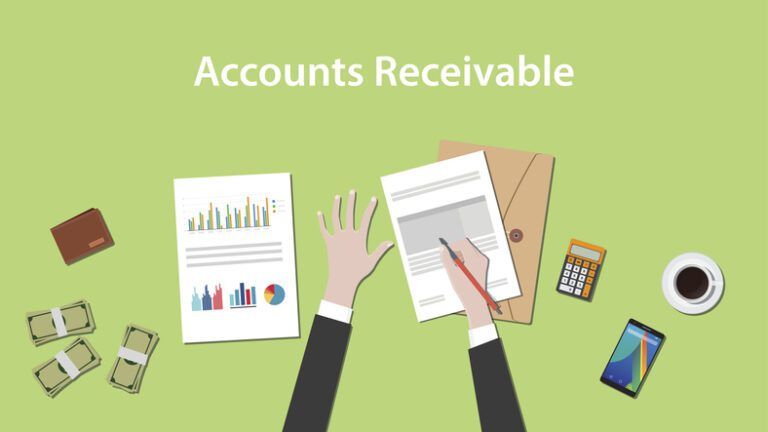Strengthen Your Balance Sheet with a Healthy Cash Reserve
The COVID-19 pandemic demonstrated, yet again, that nothing is certain in business. A perfectly healthy business can be hit by the unexpected at any time. However, companies with a cash reserve to fall back on are the most likely to survive downturns in fortune. The question is, though, how do you build up and maintain a reserve of cash? After all, most businesses are not swimming in money. The first step is to decide that building a cash resource is a priority. Here are ten steps to help you create and maintain a healthy business cash reserve.
1. Create a Realistic Budget and Cash Flow Forecast
Most businesses will already have a budget and cash flow forecast. Still, budgets are often prepared with a view to increasing sales rather than building a cash reserve. Aiming to build a reserve fund does not, of course, preclude business growth. However, you will need to create some slack in your budgeted figures to create some surplus cash. It would be best, then, to revisit your forecasts and take a more conservative view of growth and expenditure.
2. Set a Monthly Target
Aiming to put aside whatever money is left each month is not going to work. It would be best to budget your transfer to cash reserves in the same way you budget for costs. So, include a specific amount of cash to transfer to your reserve account each month in your forecasts. If your income is relatively steady throughout the year, your reserves target could be a fixed figure. If your sales are subject to significant seasonal fluctuations, a better approach might be a percentage of revenue.
3. Monitor Cash Flow Constantly
You will need to keep a tight leash on your cash flow if you want to save for a rainy day. But, reviewing your cash flow once a month is unlikely to be sufficient. It would be better to monitor your cash position and forecast at least weekly. Then, you can adjust payments to match fluctuations in sales receipts. And, if necessary, you will be able to adapt your longer-term spending in line with income faster as well.
4. Tighten Up Payment Terms
The faster the cash comes in, the easier it will be to build up a cash reserve. But, if you are giving customers significantly more time to pay than your suppliers are giving you, you will be creating a problem for yourself. Consider reducing your standard payment terms for new customers. You might also offer early settlement discounts to encourage faster payment of your invoices. When customers pay you faster than you pay your vendors, you will have a natural, variable float of cash regardless of sales volume or expenditure levels.
5. Improve Collections Procedures
Amending your standard terms will only work if you keep on top of your collections. So, monitor your aged receivables and chase customers as soon as payment becomes overdue. As with the cash flow, it will be best to review your receivables weekly rather than monthly, and don’t be afraid to get tough when it is needed. Some customers may object to a tighter approach if your collection procedures have been lax in the past. However, your customers’ accounting departments will soon learn that your invoices need to be on the top of the payment list each month.
6. Eliminate Unnecessary Expenditure
Investigate your monthly outgoings with a view to reducing waste and unnecessary expenditure. Talk to vendors to see if you can get better prices and terms, and research the market to see if you can buy any products or services cheaper. It is easy to let costs run out of control when a business is doing well. After all, you are making a decent profit, so why waste time worrying about costs? However, reducing monthly expenditure will leave you more spare cash to put into your reserve.
7. Manage Inventory Levels
Stocks of raw materials, consumables, and finished products do not earn you interest. So, consider if you could reduce your inventory levels to release more cash. Pay special attention to the slow-moving items that are tying up money for a long time, and, if you have any redundant stock, sell it off at a discount if you can. Of course, you don’t want to reduce inventory to a level that causes delays in sales order shipments. However, every dollar tied up in stock could be one more dollar in your business reserve account.
8. Plan for Worst Case Scenario
When sales are booming, the last thing you might want to think about is the worst possible scenario. However, it is best to keep your feet firmly on the ground if you’re going to build a cash reserve. Take a prudent approach to expenditure, even when profitability is high. And formulate contingency plans to get you through unexpected downturns in business. You can always reinvest when your cash surplus exceeds your target. But it is much more challenging to make up lost ground if you miss your reserve target several months in a row.
9. Get Funding Before a Crisis
Banks and other financial institutions are far more likely to lend to cash-rich companies than struggling businesses. So, it is usually best to arrange financing when you see trouble on the horizon rather than wait for disaster to strike. Borrowing will cost you more interest than you make on your cash reserves. But, if you finance and maintain your emergency fund, you will still have your safety net intact should the need to use it arise later. You may want to consider invoice factoring which converts your accounts receivable into working capital without creating debt or adding liability. Factoring does not rely on your credit rating or collateral, so companies who have faced cash flow challenges may more easily qualify for funding that a traditional bank loan.
10. Transfer Reserve Cash to a Separate Bank Account
It is best to transfer your monthly cash reserve to a separate, interest-bearing bank account. If you leave surplus cash in your business checking account, it will be way too easy to borrow from it when you don’t need to. And, of course, even at today’s low rates, the interest will help to boost your business cash reserves.
The Bottom Line
Maintaining a healthy business cash reserve could save your business during a crisis. So, keep a tight rein on your finances, even in the good times, and aim to transfer a set amount to reserves every month. And avoid the temptation to draw money from your emergency fund when it is not essential. In time, your business cash reserve will strengthen your balance sheet and provide you funds to see you through the next unexpected crisis.
About Universal Funding
Universal Funding is a private funding source that has funded thousands of businesses and more than $2 billion since 1998. We turn your accounts receivable into the funding you need through invoice factoring and can have capital in your hands in a matter of days.


